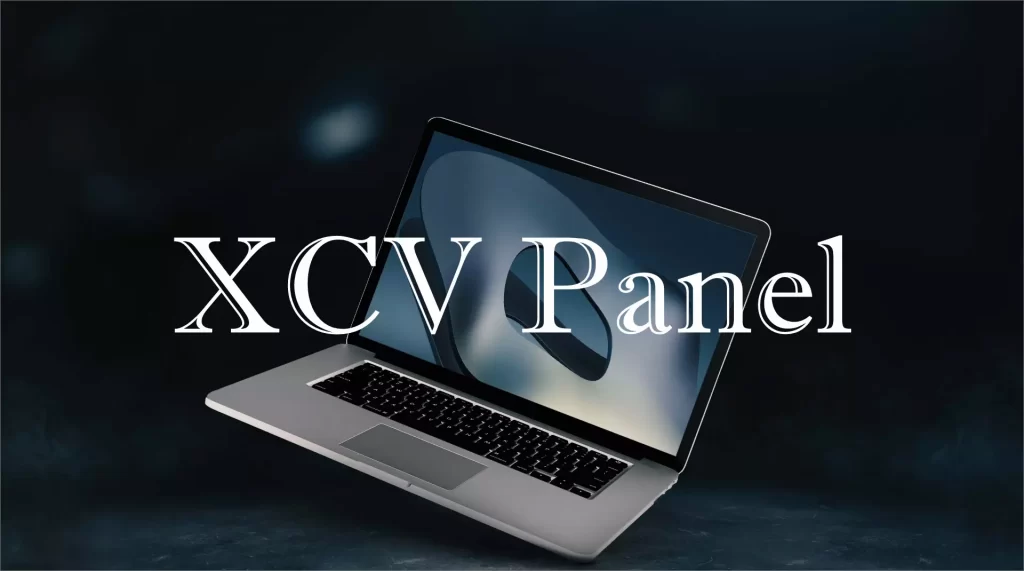Unlocking the Potential of Xcv Panels: A Comprehensive Guide
In today’s ever-evolving world, the quest for sustainable energy solutions has led to remarkable innovations in the field of solar energy. One such breakthrough is the Xcv panel, a cutting-edge technology that promises to revolutionize the way we harness solar power. In this comprehensive guide, we delve into the intricacies of Xcv panels, exploring their features, uses, advantages, options, and step-by-step installation tutorial.
Understanding the Xcv Panel: Functionality and Benefits Explored
At the heart of the Xcv panel lies its advanced functionality, which sets it apart from traditional solar solutions. By harnessing the latest in solar technology, Xcv panels boast unparalleled efficiency and performance, making them a game-changer in the renewable energy landscape. In this section, we unravel the mechanics behind Xcv panels and highlight the myriad benefits they offer to both consumers and the environment.
Revolutionizing Solar Energy: Advantages of Xcv Panels Over Traditional Solutions
Gone are the days when solar energy was seen as a niche alternative to conventional power sources. With Xcv panels leading the charge, solar power has emerged as a mainstream contender, capable of rivaling traditional solutions in terms of cost-effectiveness, reliability, and sustainability. Here, we examine how Xcv panels are reshaping the way we think about solar energy and why they represent the future of renewable power generation.
Exploring Diverse Applications of Xcv Panels in Various Industries
From residential rooftops to commercial complexes and industrial facilities, Xcv panels find application across a wide spectrum of industries. Their versatility and adaptability make them an ideal choice for powering everything from homes and businesses to remote off-grid installations. In this section, we explore the diverse applications of Xcv panels and showcase their potential to drive innovation and efficiency in various sectors.
Demystifying the Main Types of Xcv Panels: Which One Suits You?
Not all Xcv panels are created equal, and understanding the different types available is crucial for selecting the right fit for your specific needs. Whether you’re looking for maximum efficiency, durability, or affordability, there’s an Xcv panel option tailored to meet your requirements. Here, we break down the main types of Xcv panels and help you determine which one suits you best.
Mastering the Installation Process: Best Practices for Xcv Panel Setup
While the benefits of Xcv panels are undeniable, proper installation is key to unlocking their full potential. From site selection and preparation to panel mounting and wiring, every step of the installation process requires careful attention to detail. In this section, we provide a step-by-step tutorial for installing Xcv panels, along with best practices to ensure optimal performance and longevity.
Harnessing Renewable Energy: Your Xcv Panels Primed for Power Generation
With Xcv panels installed and ready to go, it’s time to reap the rewards of renewable energy generation. Whether you’re looking to reduce your carbon footprint, lower your electricity bills, or achieve energy independence, Xcv panels offer a sustainable solution that puts the power in your hands. Here, we explore how Xcv panels harness the sun’s energy to generate clean, renewable power for your home or business.
Prioritizing Safety: Essential Measures for Operating Xcv Panels
While Xcv panels are designed with safety in mind, it’s important to take precautions to prevent accidents and ensure safe operation. From routine maintenance and inspection to handling emergencies and extreme weather conditions, there are several safety measures that Xcv panel owners should be aware of. In this section, we outline essential safety tips and guidelines for operating Xcv panels responsibly.
Choosing the Right Fit: Factors to Consider When Selecting Xcv Panels
Selecting the right Xcv panels can be a daunting task, with numerous factors to consider, including efficiency, durability, warranty, and cost. By carefully weighing these factors and conducting thorough research, you can make an informed decision that aligns with your energy goals and budget. Here, we discuss the key factors to consider when selecting Xcv panels and offer practical advice to help you make the best choice.
Navigating Limitations: A Candid Look at the Drawbacks of Xcv Panels
While Xcv panels offer numerous benefits, they are not without their limitations. From intermittency and weather dependence to upfront costs and aesthetic considerations, there are several factors that may impact the suitability of Xcv panels for certain applications. In this section, we take a candid look at the drawbacks of Xcv panels and discuss strategies for mitigating their impact.
Leading the Charge: Research Centers Pioneering Xcv Panel Innovations
Behind every groundbreaking technology lies a team of dedicated researchers and innovators pushing the boundaries of what’s possible. In the case of Xcv panels, research centers and laboratories around the world are at the forefront of innovation, driving advancements in efficiency, durability, and cost-effectiveness. Here, we shine a spotlight on the research centers pioneering Xcv panel innovations and shaping the future of solar energy.
Is the Xcv Panel the Perfect Fit for Your Energy Needs?
As you weigh the pros and cons of Xcv panels and explore their potential applications, you may be wondering whether they’re the perfect fit for your energy needs. The answer depends on a variety of factors, including your location, energy consumption patterns, budget, and sustainability goals. In this section, we help you assess whether Xcv panels align with your energy needs and objectives.
Forecasting Tomorrow: Exploring the Future Landscape of Xcv Panels
As technology continues to evolve and renewable energy adoption accelerates, the future landscape of Xcv panels is filled with promise and potential. From advancements in efficiency and performance to breakthroughs in energy storage and grid integration, there are endless possibilities on the horizon. In this section, we peer into the crystal ball and explore what the future holds for Xcv panels and the solar industry as a whole.
Exploring Alternatives: Other Options Beyond Xcv Panels for Renewable Energy
While Xcv panels offer a compelling solution for harnessing solar energy, they’re not the only game in town. Alternative renewable energy technologies, such as wind turbines, hydropower systems, and geothermal heat pumps, also have their own unique advantages and applications. In this section, we explore the alternatives to Xcv panels and discuss how they stack up in terms of efficiency, cost, and suitability for different environments.
In conclusion, Xcv panels represent a significant advancement in the field of solar energy, offering unmatched efficiency, reliability, and sustainability. By understanding their features, uses, advantages, and installation process, you can harness the power of Xcv panels to meet your energy needs and contribute to a cleaner, greener future. Whether you’re a homeowner, business owner, or industry professional, Xcv panels offer a versatile and cost-effective solution for generating clean, renewable power.
FAQ’s
1. What are XCV Panels?
XCV Panels are innovative construction panels designed to revolutionize the way we build structures. These panels are engineered using state-of-the-art materials and technology to provide superior strength, durability, and versatility in various construction applications.
2. What are the Key Features of XCV Panels?
- Exceptional Strength: XCV Panels boast impressive strength-to-weight ratios, making them ideal for both structural and non-structural applications.
- Durability: Constructed with high-quality materials, XCV Panels offer excellent resistance to wear, tear, and environmental factors, ensuring long-term performance.
- Versatility: From residential buildings to commercial structures, XCV Panels can be used in a wide range of construction projects, including walls, floors, roofs, and more.
- Easy Installation: With their innovative design, XCV Panels facilitate quick and hassle-free installation, saving time and labor costs.
3. What are the Common Uses of XCV Panels?
XCV Panels find applications in various industries and construction projects, including:
- Residential Construction: Wall panels, flooring systems, roofing solutions, etc.
- Commercial Construction: Office buildings, retail spaces, warehouses, etc.
- Industrial Applications: Manufacturing facilities, storage units, agricultural buildings, etc.
4. What are the Advantages of Using XCV Panels?
- Speed: XCV Panels enable faster construction compared to traditional methods, reducing project timelines significantly.
- Cost-Effectiveness: By minimizing labor and material costs, XCV Panels offer a cost-effective solution for construction projects.
- Sustainability: With their eco-friendly design and efficient use of resources, XCV Panels contribute to sustainable building practices.
- Customization: XCV Panels are available in various sizes, configurations, and finishes, allowing for customized solutions to meet specific project requirements.
5. What Options are Available for XCV Panels?
XCV Panels come in a range of options to suit different needs and preferences, including:
- Size: Standard panel sizes as well as custom dimensions.
- Material: Different materials such as wood, metal, composite, etc.
- Finish: Various finishes like smooth, textured, painted, etc.
6. How Can I Install XCV Panels?
Installing XCV Panels is a straightforward process that can be broken down into simple steps. While specific instructions may vary depending on the application and panel type, here’s a general overview of the installation process:
- Prepare the Surface: Ensure the surface is clean, level, and free from any debris or obstacles.
- Measure and Cut: Measure the panels according to the dimensions required for your project and cut them to size using appropriate tools.
- Position Panels: Place the panels in their designated positions, ensuring proper alignment and spacing between each panel.
- Secure Panels: Use suitable fasteners, adhesives, or mounting hardware to secure the panels to the substrate securely.
- Finishing Touches: Complete the installation by applying any necessary finishing touches, such as sealing joints or painting the panels.
By following these steps and referring to specific installation guidelines provided by the manufacturer, you can achieve a professional and durable finish with XCV Panels.
In conclusion, XCV Panels offer a host of features, benefits, and options that make them a preferred choice for modern construction projects. Whether you’re looking to enhance structural integrity, streamline construction processes, or create sustainable buildings, XCV Panels have you covered. Explore the possibilities and unlock the full potential of your next construction endeavor with XCV Panels!











